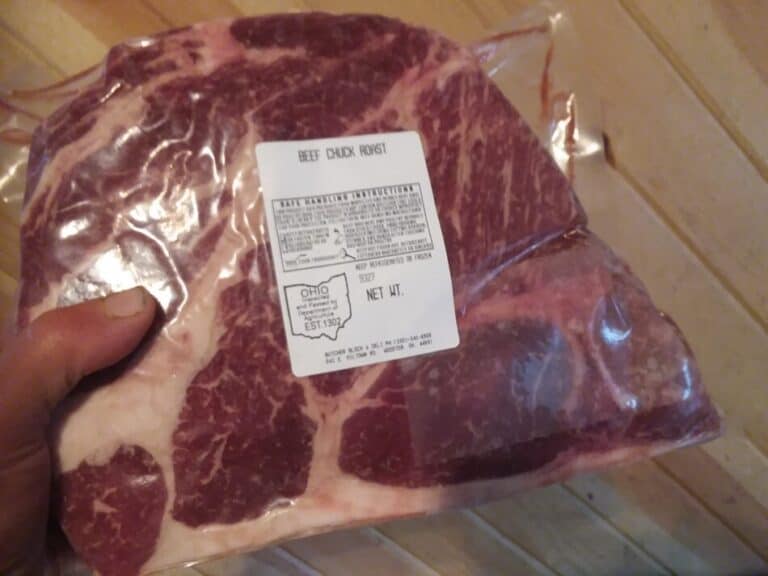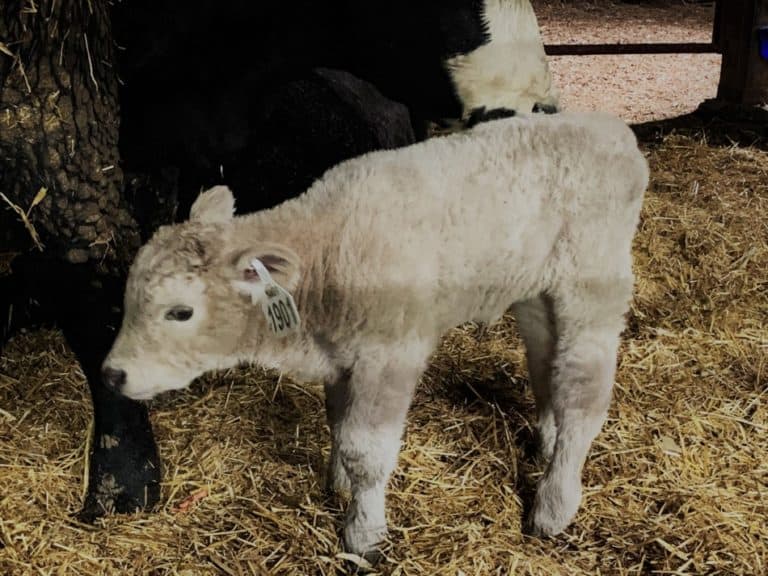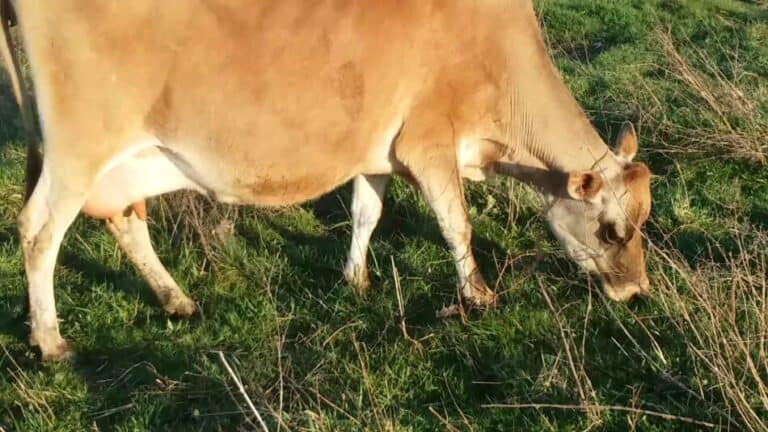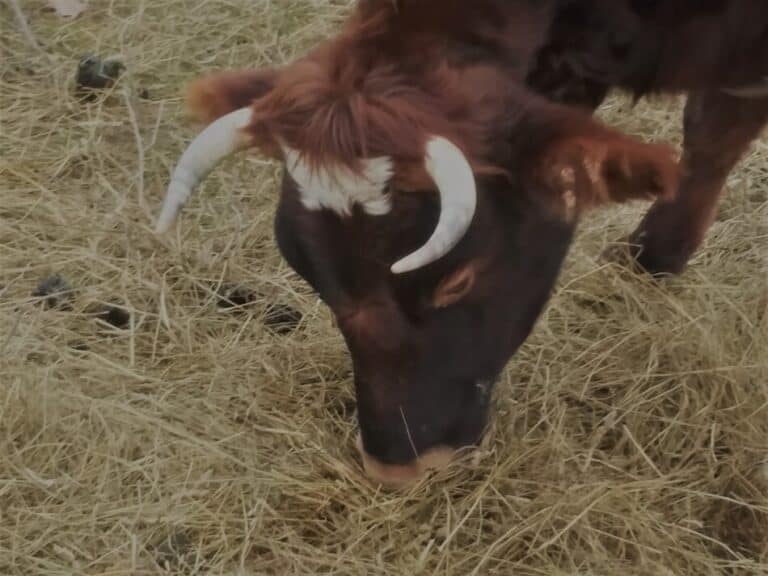Cattle Reproduction: The Basics For Beginners!
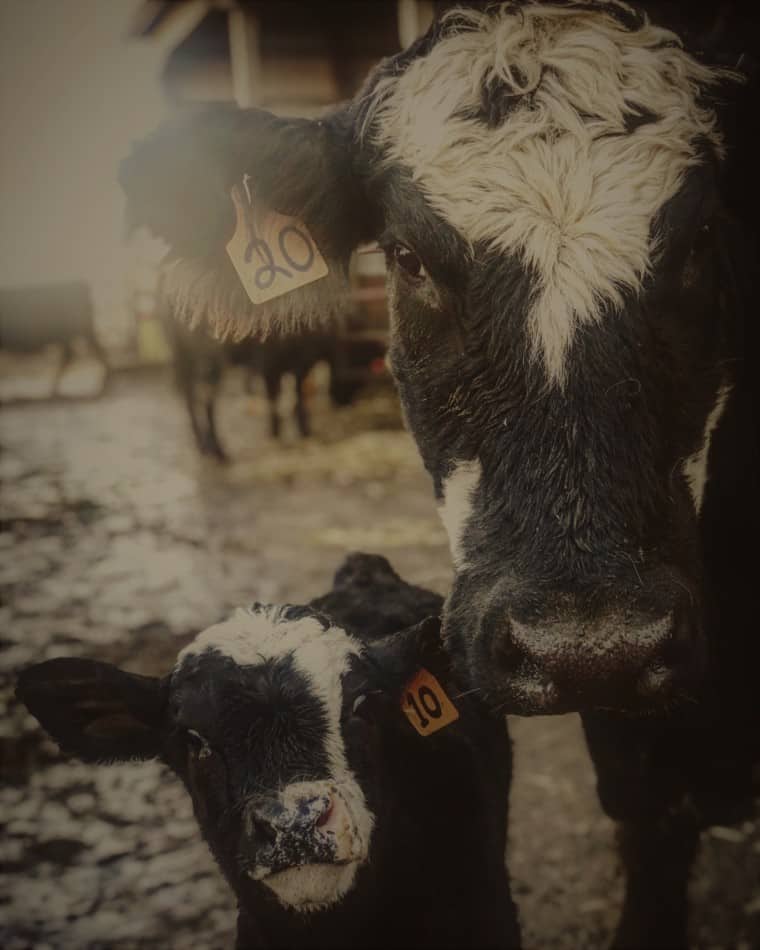
Cattle are great to raise, and nothing says “I’m into livestock” as much as having a herd of your own!
When considering getting some cattle, you’ll run across a whole new world of terms. Understanding the basics is the place to start!
Cattle reproduction is a cycle that has stages of the reproduction and growth that repeats every year.
For anyone who didn’t grow up with cattle, the terms cattlemen use, in person or in information, can be confusing at first.
No worries, once you learn the basics it gets tons easier!
Wondering About Using A.I. For Your Cattle? goes over the basics for anyone considering artificial insemination.
Note: This article is put together to give you a basic overview of cattle reproduction.
Any terms that you find confusing or just want a specific definition for are listed at the end of the article in a glossary format.
Cattle have an annual reproduction cycle
The basic production cycle for cattle is a 9 month gestation, birth on grass, staying with mom until weaning, being put with peers to grow until reaching finishing weight.
The reproduction cycle is pretty much the same, with a breed back included for the cows or the initial breeding cycle for heifers.
Most brood cows will have a calf every year until they are culled for low performance. As long as a cow stays productive, she can remain in the herd.
Culling does not have to be based on age, older cows can perform very well in the herd. Younger cows can also be culled if found to be lacking in results.
Family Cow: Getting Her Bred Back goes over your options and helps you plan a workable calving date.
A normal year’s reproduction cycle for cattle
Usually a cow calf operation will be calving in the spring, in order to make the most of the summer grazing.
The the calves can be weaned and separated off or kept with their moms, depending upon the owner’s preferences.
At weaning, the calves are given injections, tags if they don’t already have one, and castrated. Branding, if being used, will be done at this time, as well.
Calves that are weaned are kept in peer groups.
Sometimes they are sold to another farmer or rancher, sometimes they stay on the home farm or ranch, it depends upon the management system being used and the resources available.
Not all cattlemen raise their own calves
Some cattlemen raise only feeders, which are well grown weaned calves.
In this case the weaned calves would be purchased from a cow calf operation, meaning cattlemen raising feeders/stockers do not have all of the moms to the steers they are feeding out.
Raising a few feeders up to market weight is common in my area.
People with some pasture available that don’t want to keep the brood cows all winter, like buying ready to grow for you feeder cattle.
These folks aren’t farmers or ranchers, at all. They are everyday people with jobs or are retired and want to raise a few head of cattle for freezer beef for themselves and neighbors.
Since every farm is different, as are the owners and the resources available, sometimes it makes more sense to purchase weaned calves from another herd.
These feeders can be grazed or raised in a feedlot. They will stay with this owner until they are finished.
Most cattle calve in the spring
Calving season is normally the spring
Most cow/calf producers would be calving on pasture in the spring.
Any herds that are calving earlier than calf appropriate weather will need to have plenty of barn space for soon to be moms to give birth in.
There are those cattle raisers who prefer to have their cows calve in the fall, one of our neighbors runs his herd of Herefords on a fall calving schedule.
On the plus side, fall born calves will be offset from the spring born calves enough that they will be worth more money when sold, as feeders or finished cattle.
The catch is that they also take more money to get them through to finishing, since they are being fed purchased feed for two winters instead of just one.
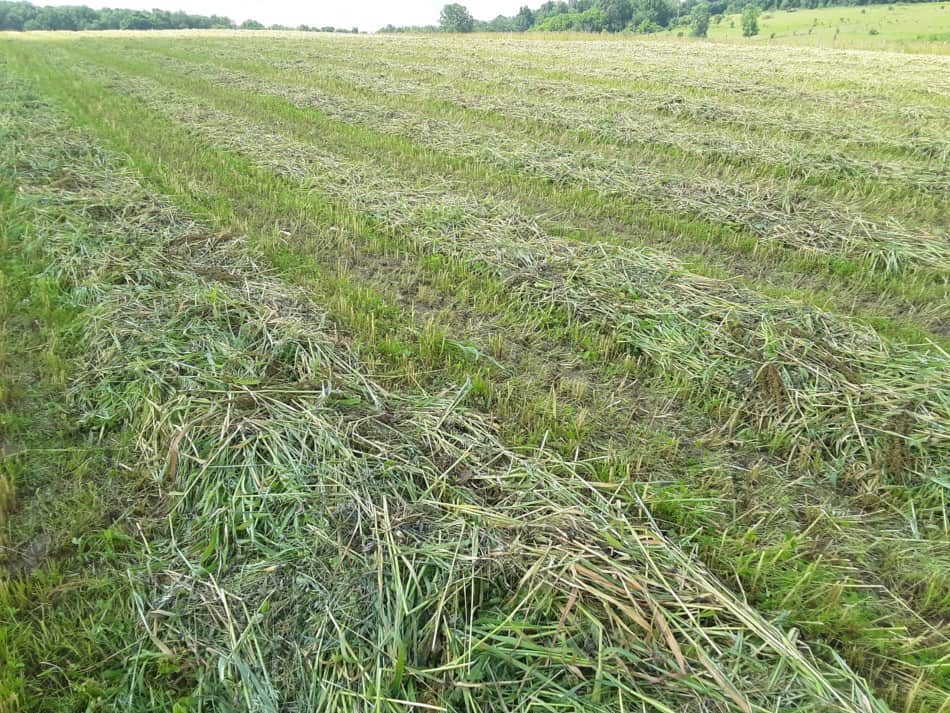
Feeder cattle can be grazed or in feedlots
Depending upon the individual operation and the resources available, cattle may be finished on grass or in a feedlot. The decision here is usually money.
Grass based finishing of cattle takes longer and more land, feedlot finished cattle reach selling weight faster.
Grass Fed vs Grain Fed goes over my take on the good and the not so good of each system.
There are good people in favor of each method of production. I am a fan of grazing, since cattle are ruminants!
However, I am aware that grazing is not an option for all cattle raisers, especially small scale cattlemen.
We see people with limited land deciding to keep the brood cows on pasture and put the younger, still growing cattle in a smaller area on better feed.
Grazing Cattle: Using Grass To Feed Your Herd gives you some pointers on maximizing your pasture’s forage production.
Many cattle herds use A.I. for breeding
Some producers love A.I. others would just rather get a bull.
Here are some of the advantages of A.I.:
- You don’t have to feed or handle the bull
- Multiple bulls can be used in the herd
- Cows can be bred for individual improvements
- High dollar genetics are available for less money
Here are some of the disadvantages of using A.I.:
- Requires your time, to watch cattle and do the insemination
- Depends upon the skill and timing of the technician
- Cattle must be caught and held to be inseminated
- Not using area specific genetics
The short version is A.I. requires you to spend time getting the cows bred, but you don’t need to keep and feed a bull.
Using a bull means he does the work for you, but you feed and manage him.
Non producers kill herd profits
The biggest hits here will be cows that don’t calve, death losses and high feed costs.
Cows not calving kills profits
The first one, not calving, is easy to understand as a profit killer.
When you are in the business of raising and selling cattle, any cow or heifer that does not breed and produce a calf every year is not a worker, she’s a freeloader.
Freeloaders need to be culled.
Cattle death losses cost you money
Death losses are the second big way to loose money with your cattle. This could be loss of an adult or a calf.
This hurts even more when the loss was preventable.
I’m referring to a problem that was too severe to stop once you saw it, but had you checked the cattle more frequently, you would have been able to intervene.
For instance, a difficult birth resulting in the death of the calf. Had you been attending the birth, you may have been able to save the calf.
Checking your cows multiple times a day would have brought the problem to your attention earlier.
The other source of death losses I’m referring to things like a quick bloat or blackleg (a deadly clostridial infection), which can occasionally happen, even in well managed herds.
To me death losses are the most frustrating, since you already have money and time into the animal yet you’ll be getting no return. That hurts.
High feed costs eat away potential profits
While high feed costs may not seem as problematic as non productive cows or death losses, this one is more insidious.
Feed costs keep adding up, especially through the winter hay feeding months.
If you aren’t vigilant about keeping track of the numbers, the cost to feed your herd can get pretty high, pretty fast.
You will need some sort of stored feed for your cattle, even if it’s just for a few days a year. Plan for it and put a realistic amount of hay in your budget.
Another side to high feed costs: Reasonably priced hay can get expensive quickly if all you are doing is feeding intestinal worms!
Deworming your cattle will make sure that your money spent on feed is nourishing your cattle, not their worms!

Know the common cattle terms
Here’s an alphabetized list of the terms you need to know and their definitions.
While this is important information, I put it at the bottom of the page since reading it straight through can be a bit boring!
Note: I refer to the beef animal being a steer in most of the definitions.
In reality, many of the cattle raised as market animals are female, since not all heifers are kept to be used in the breeding herd.
In order to keep it simple, I have been listing steer only, know that it means calf of either sex raised for meat.
Artificial Insemination (A.I.)-using thawed semen to breed a cow. A technician or an owner with training, uses a straw of semen to breed a cow or heifer that is in standing heat.
Bred– confirmed pregnant. Bred could refer to a cow or a heifer.
Breed back-getting the cow or heifer rebred after the calf is born. Usually this is done when the calf is 3 months old, in order to keep the herd on a 12 month calving interval.
Brood cow-cows kept for their ability to be moms, this is the majority of the herd.
Bull-intact male that is being used for breeding or in the case of a calf will be used for breeding when he is mature. If he is not yet full size another term will be added to indicate his age, for example yearling bull or bull calf.
Calf-bovine that is under a year old, can be male or female
Calving interval-time between calvings. Usually the interval is 12 months, to keep the calves born at the same time each year.
The interval can be adjusted slightly each year to move the expected calving date to sooner or later in the year.
Carcass-the muscling of the body, either referring to the muscling on a steer while it is growing, genetic carcass traits, or the main meat areas of the body once the steer is butchered.
Concentrates-grain or pelleted feed for cattle, not longer stemmed plant material like grass or hay
Cow-an adult female that has had a calf, usually she is two or older
Cow/calf-this is the operation or the farm/ranch, meaning the cattle here are having calves.
Cull-remove an animal from the herd, usually for poor performance. A cull will be sold for beef.
Heat cycle-the 21 day hormone cycle for cattle. This cycle will be repeated every 21 days as long as the female is not bred.
Heifer-female bovine that has not had a calf. She will be called a heifer from the day she is born until she gives birth.
Fed out-raising a calf to finishing by feeding it from weaning or yearling age to finishing age. Usually, this would mean feeding concentrates, but not always.
Feeder-a weaned calf that is kept to raise for beef. Feeders can be male or female.
Feedlot-a contained area where feeder cattle are fed out.
Feed to Gain Ratio-the amount of feed, usually concentrates, needed for one pound of gain.
The number will be written as a ratio, for example: 8:1, which would be 8 pounds of feed for one pound of gain.
Finishing weight-also called slaughter weight. Finishing means that the animal has enough of a fat covering on it’s body that the meat will be well marbled.
The fat covering is called the finish. All of this relates to beef quality, a highly marbled carcass is worth more than a lean, less marbled carcass.
Freemartin-a heifer calf that was born as a twin to a bull. She is very likely to be a non breeder, actually a 90% chance she is sterile.
A freemartin only looks like a female from the outside, internally she does not have the reproductive organs that other heifers have.
Twin heifers do not have this problem, just heifers that are twin to a bull.
Forage-plants the cattle eat for the energy from the leafy growth. Examples would be grass and hay. Grain is not a forage, even though it comes from plants.
Gestation-length of pregnancy. For cattle the length of gestation is 9 months.
Grain-the seed of certain plants fed to cattle for the high energy it provides. Examples are corn (the kernels) and soybeans.
Grain fed-cattle that get grain as part of their daily feed ration.
Grain fed and finished-a finished steer that was given grain while he was growing and when he was putting on the marbling and the outer fat layer.
Grass fed-cattle that are eating grass. This would be most beef cattle in the U.S. at some point in their lives. Very few cattle would be born and raised completely inside.
Grass fed and finished-a steer that was fed grass his entire life, from when he was still nursing his mom until he reaches finishing weight.
Grass fed and finished would apply to all non feedlot cattle. These cattle could still be given some concentrates, as well.
If you are looking for cattle that had no grain what so ever for their lives you are looking for 100% grass fed and finished, meaning this steer would have eaten exclusively forage his entire life, no concentrates ever.
Grazing-cattle eating grass or other forages while walking on the field that the grass is growing in. No machinery is needed for a cow to get the grass if she is grazing, she get the grass herself.
Hanging weight-The weight of the carcass once the head, hide, lower legs and internal organs are removed.
Higher hanging weight for the live weight means the person who bought your steer for meat gets more meat for their money. Good news, you’ll get paid more, as well.
Hay-forage that has been dried to preserve it for feeding later. Common hay crops are alfalfa, timothy, and orchard grass in our area.
Your area will differ based on what forages grow best in your region.
Haylage-fermented hay that is baled moist and wrapped in plastic to cut off the air. Hay that would be baled moist but not wrapped will just rot.
The plastic keeps proves a growth environment that the fermentation bacteria love and the rotting bacteria do not grow in.
This allows the fermentation bacteria to thrive and ferment the hay into haylage. This is the same bacteria and basic process that is harnessed to make sauerkraut.
Lactation-milking. Normally, talk of milking is left to the people with dairy cattle, but beef cattle milk, too!
Marbling-streaks of fat in the meat. When you look at a steak or roast, the white flecks in the meat are marbling.
Marbling is important for flavor and juiciness of the meat.
Open-refers to a cow or heifer that is not bred. Sometimes a heifer being open is normal, for instance an 8 month old heifer is open, since she is too young to breed.
A cow is also open for the first few months after calving, then she should be bred back.
Quality grade-refers to the eating quality of the meat, basically the amount of marbling in the retail cuts.
The quality grade is what is being referred to when you see meat labeled as Prime, Select, or Choice. The steer would have also been listed as Prime, etc. when it was sold.
Here’s a good article from South Dakota State University with easy to understand definitions and pictures.
Ration-the total feed the cattle are eating. This would include grass, hay, haylage, grain, bagged feed you bought for them, whatever they are eating for the day.
Roughage-the part of the cattle ration that is plant leaves and stems, not grains. The most common purchased roughage for cattle would be hay, the most commonly eaten roughage is grass.
Ruminant-cattle have a stomach with four compartments. This special stomach allows them to break down fibrous plants into energy.
A ruminant will rechew little boluses of food, this is called chewing her cud.
She chews her cud to make the pieces of food smaller so the bacteria in her stomach can break down the food to be used by her body.
Standing heat-the time of the heat cycle when the cow or heifer will stand to be bred by the bull.
Steer-a castrated male bovine of any age.
Stockers-another word for feeder cattle
Substantial-refers to the build of the cow or the bull. A cow with a substantial build will have stouter made calves than a thinner built cow.
Weaned-the calf does not get milk from the cow anymore.
Weaning can be done by separating the calves from the brood cows or by the cows themselves, when she feels the calf no longer needs to keep nursing.
Yearling-a calf that is about a year old
Yield Grade-refers to the expected meat amount from the steer based on a visual inspection of the live animal at finishing weight.
A chunky well filled out steer with a nice layer of fat will have a higher yield grad than a steer that has a thinner build or is not as well finished.
Here’s an article from Oklahoma Cooperative Extension Service that explains yield grade.
